A Visit to Bailey Nurseries in oregon
A field of spirea in bloom.
With fall just around the corner, I accompanied our Tree and Shrub Buyer, Gabriel Maki, on a visit to a few of our favorite Oregon growers to check out some of the plants they are raising. Many of the plants we saw will be at their peak and in full bloom this fall. Others are being carefully trimmed to achieve the perfect size for spring.
Growing plants for garden centers is an exacting task that requires not only a great wealth of horticultural knowledge but an innate sense of each plant's specific temperament (not to mention a feel for the vagaries of weather). It can be an exciting, challenging, and fulfilling endeavor, and it was incredibly impressive to see our Pacific Northwest growers in action.
This trip is also an opportunity for us to share the stories and images behind the plants we proudly carry at Swansons. Think of it as a sneak peek behind the scenes and into the minds of the people who ultimately influence what we choose to grow in our gardens. Let’s take a tour of Bailey Nurseries in Yamhill, Oregon.
Bailey Nurseries is a fifth-generation, family-owned business, with origins that trace back 110 years to Minneapolis, Minnesota. Since 1977 Bailey has been growing ornamental trees, fruit trees, shrubs, and roses on 1,100 acres of farmland in Oregon.
Upon our arrival we were greeted by Sergio who has worked with Bailey since 1981 and is largely considered to be one of the world's leading Hydrangea growers. We hopped into Sergio's truck for a tour of some of the hundreds of acres that make up the Yamhill facility.
Gabriel and Sergio talking plants.
Bailey is one of the only growers who are able to have exceptional plants ready for us to sell in the fall as well as the spring, and we are one of the few nurseries able to continually bring in large quantities of beautiful, fresh plants throughout September and beyond. As we toured a field, we could see rows of the same plants side by side, some nearly in full bloom and others, much smaller, that will be at their peak next spring.
I ask Sergio how he is able to keep track of rotating the plants and caring for them so they will be ready for a particular year or season. "We have a book here," he says as he pats a large notebook, "but I don't use it." He smiles and I understand immediately. He doesn't need the book; he just knows. I suppose it is a sense that has grown more acute over the last 37 years of carefully tending plants.
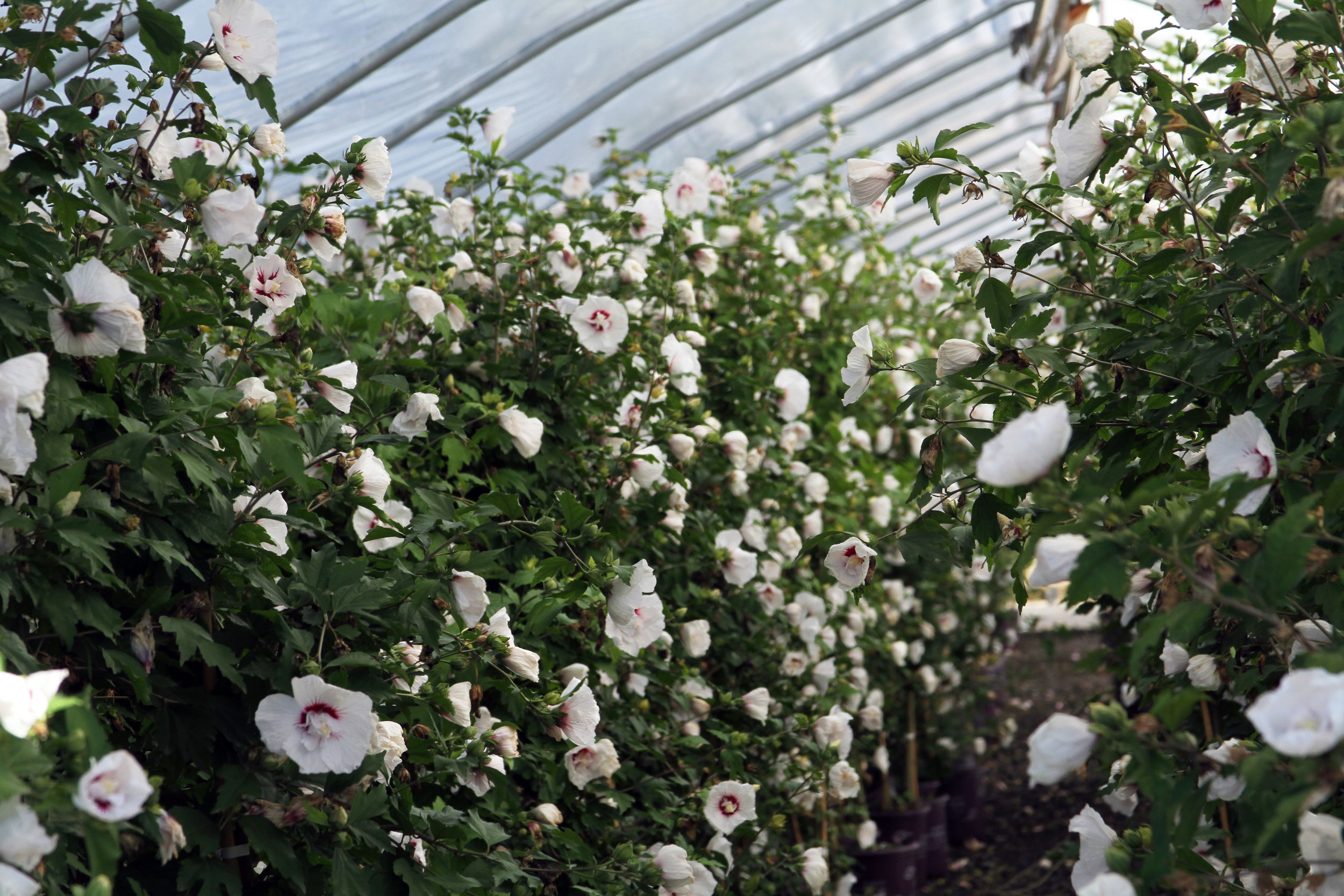
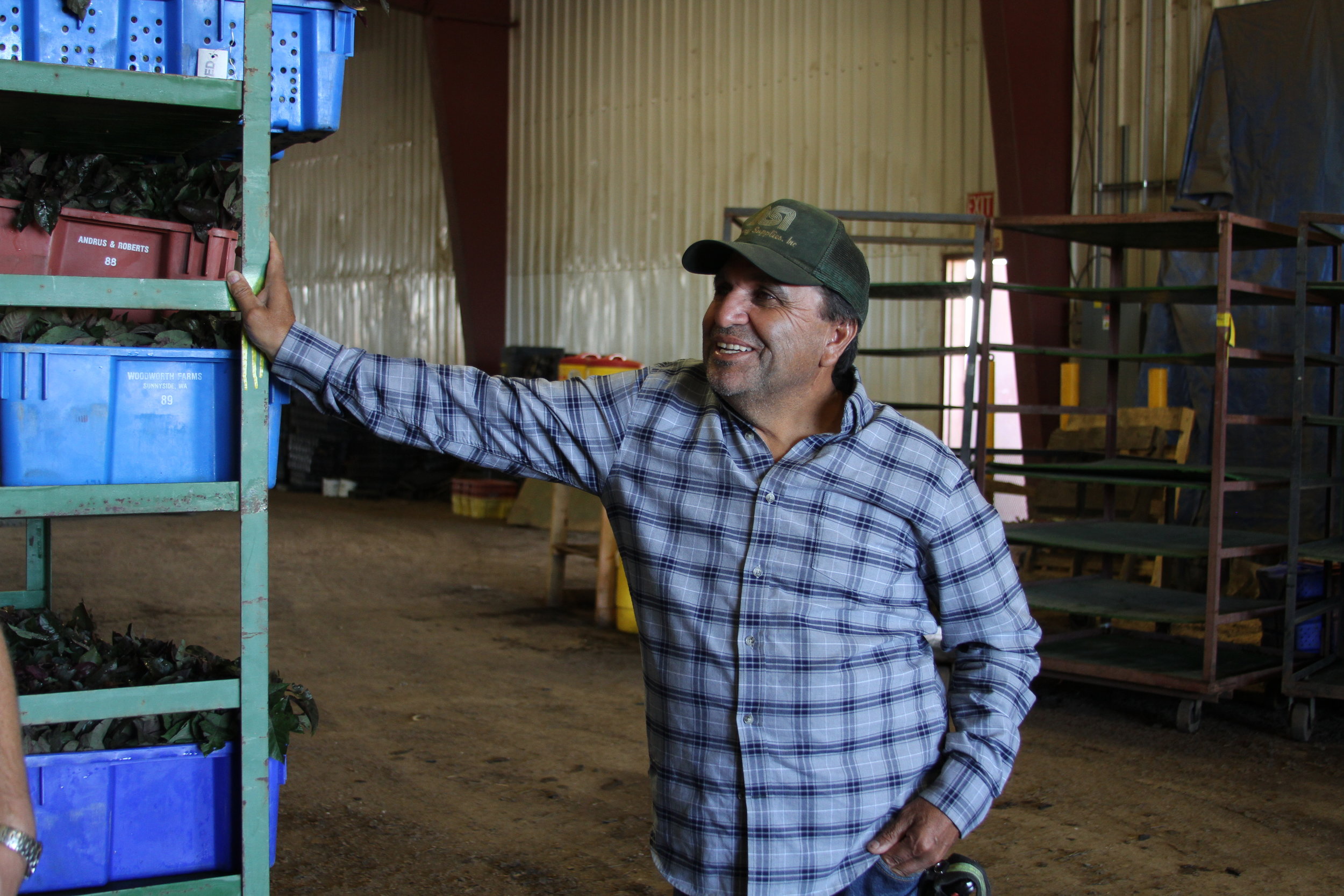
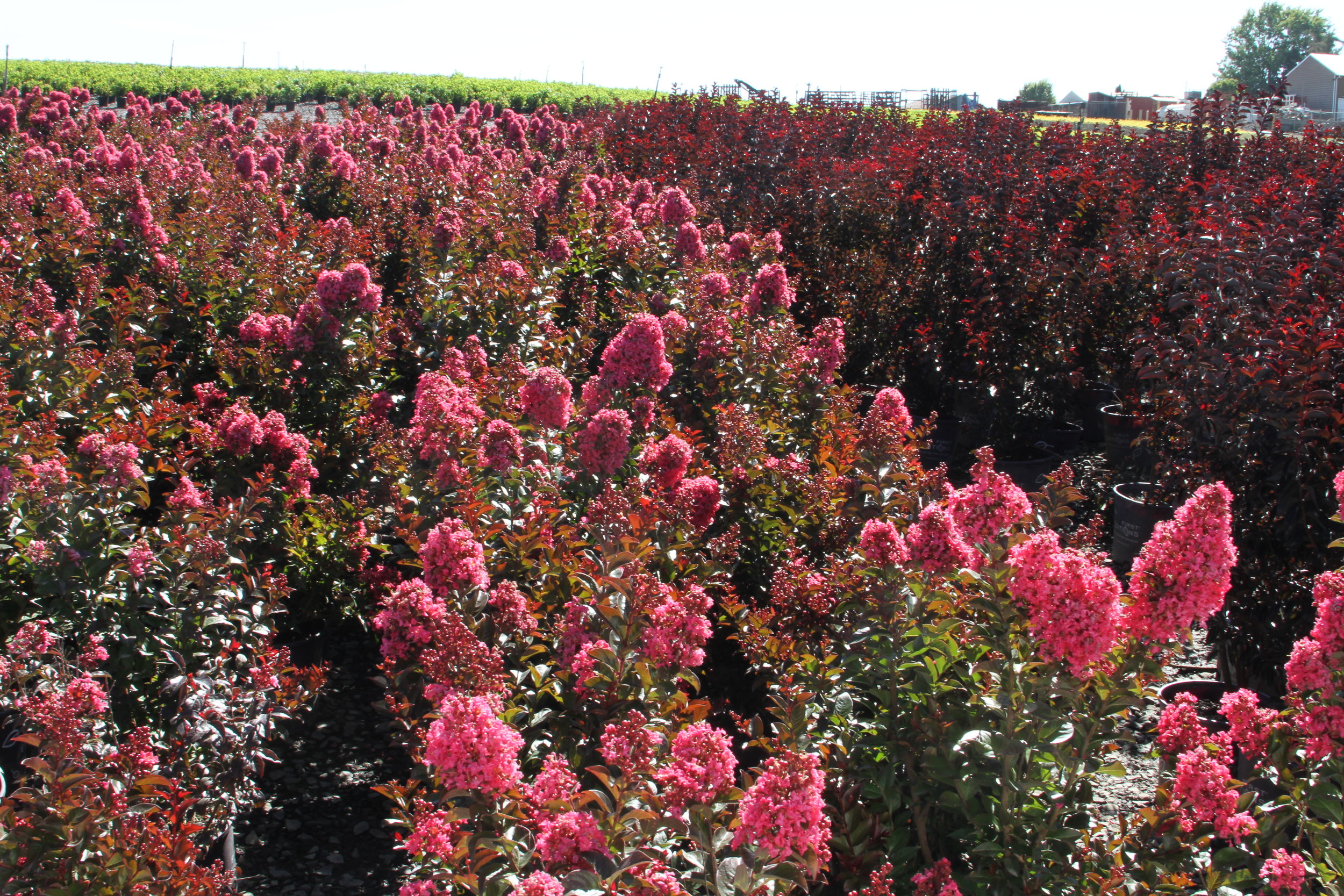
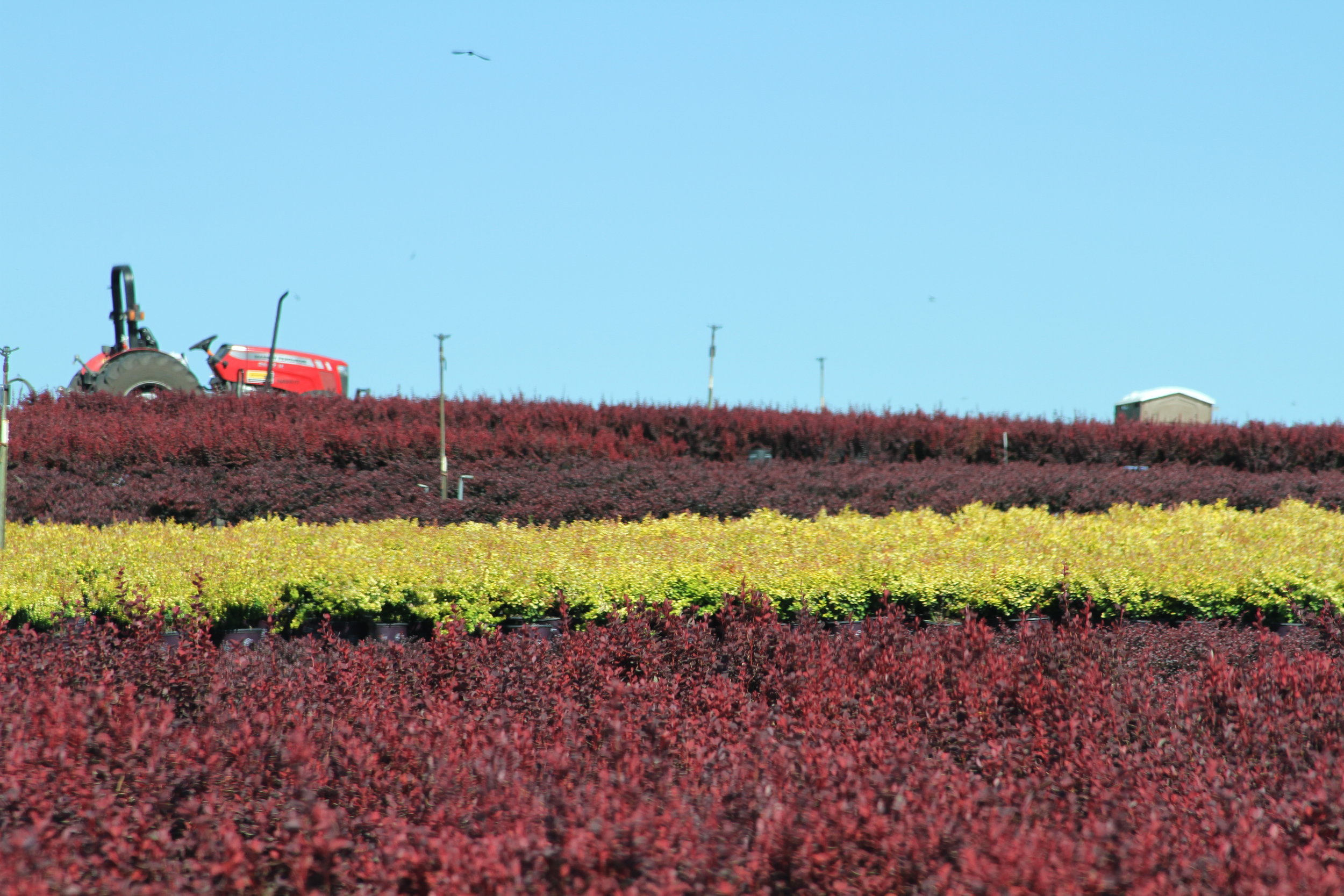
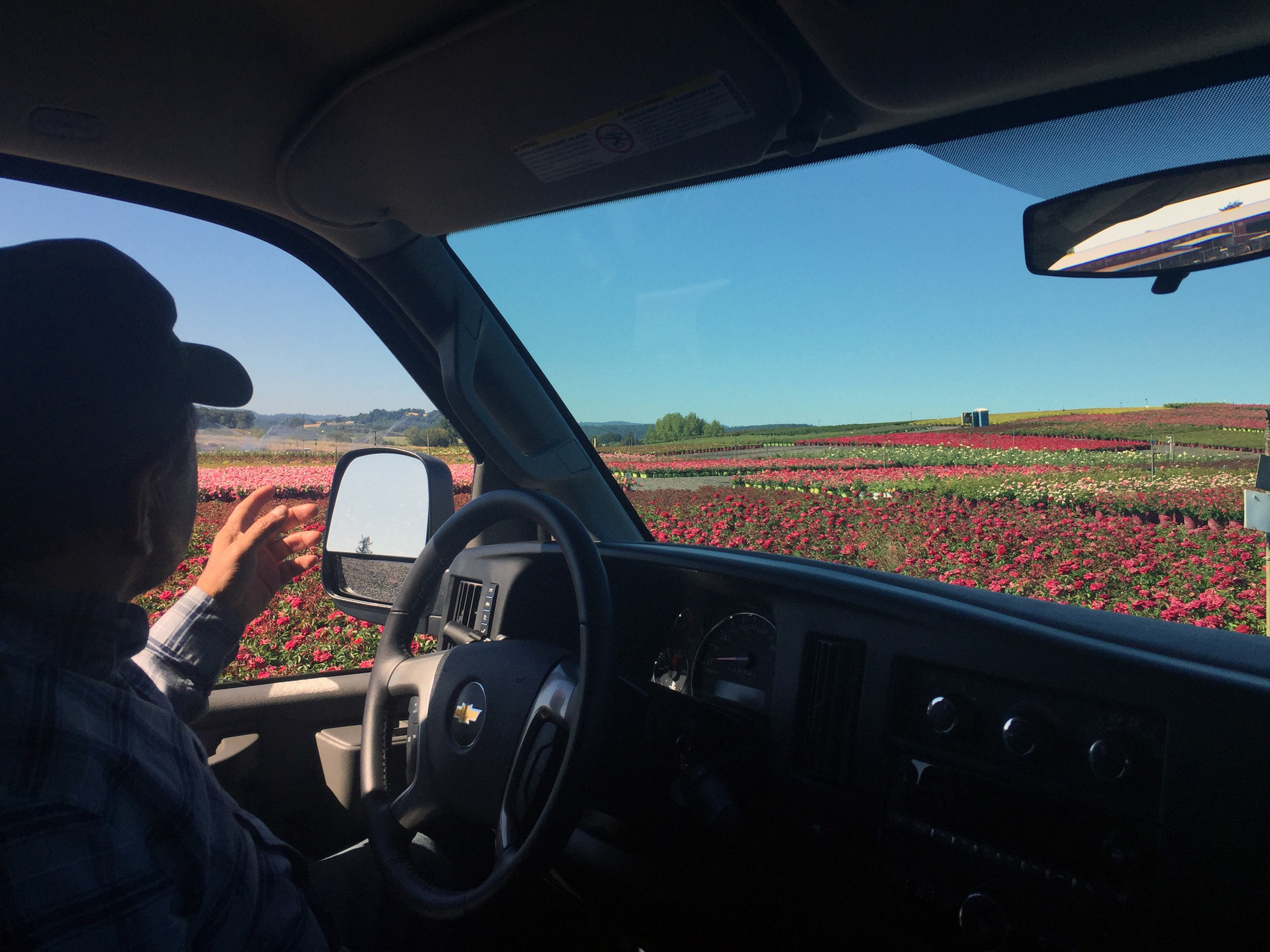
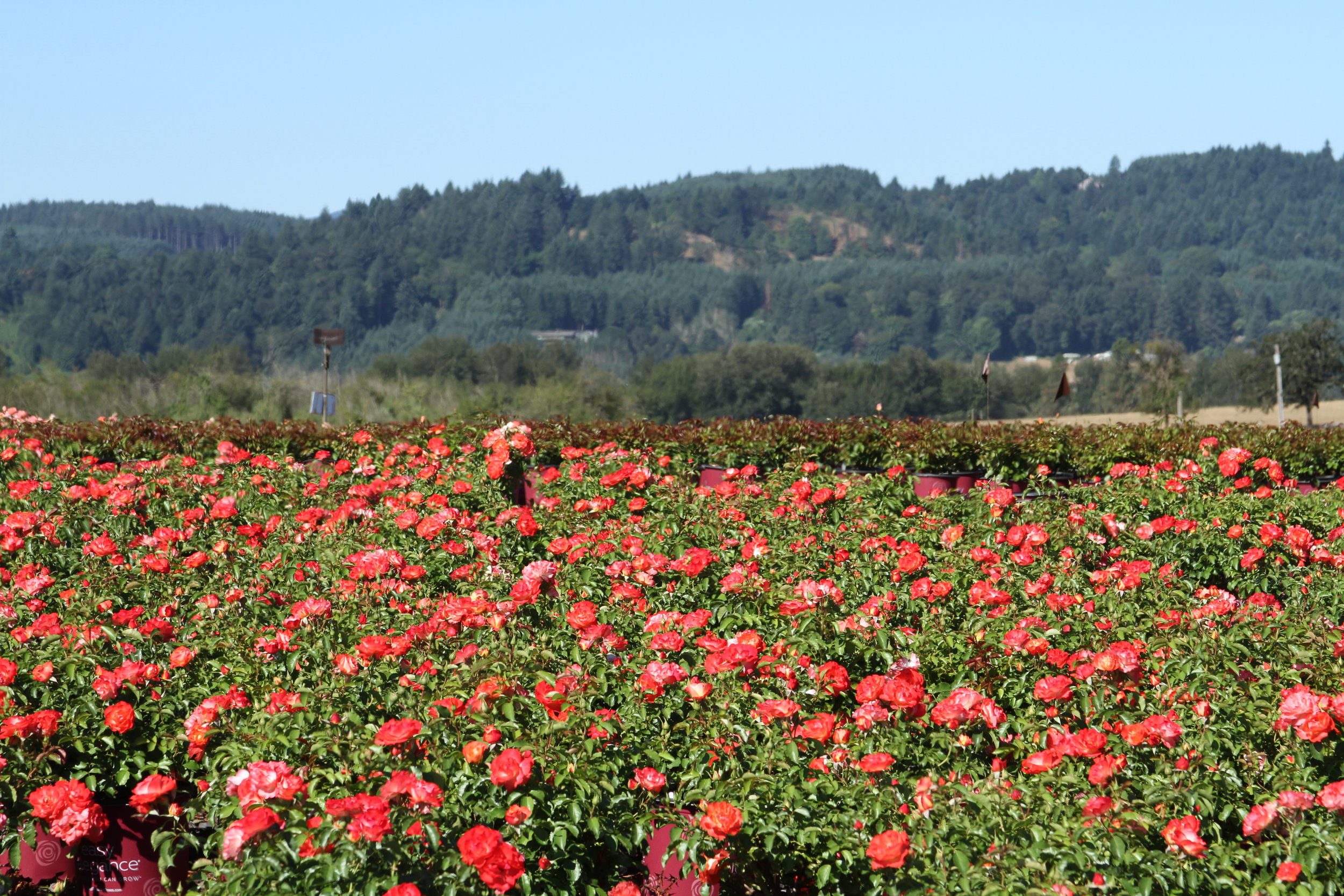
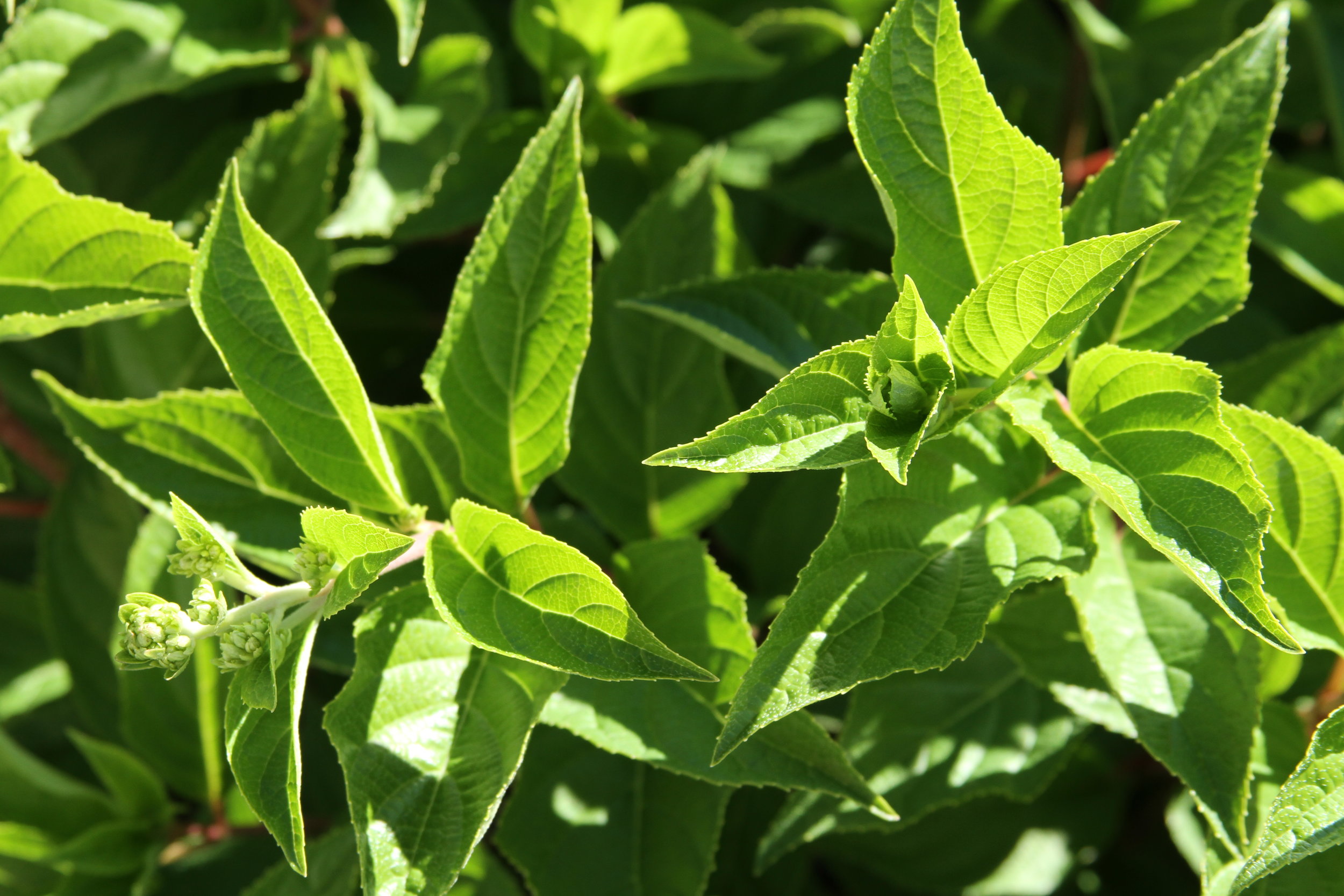
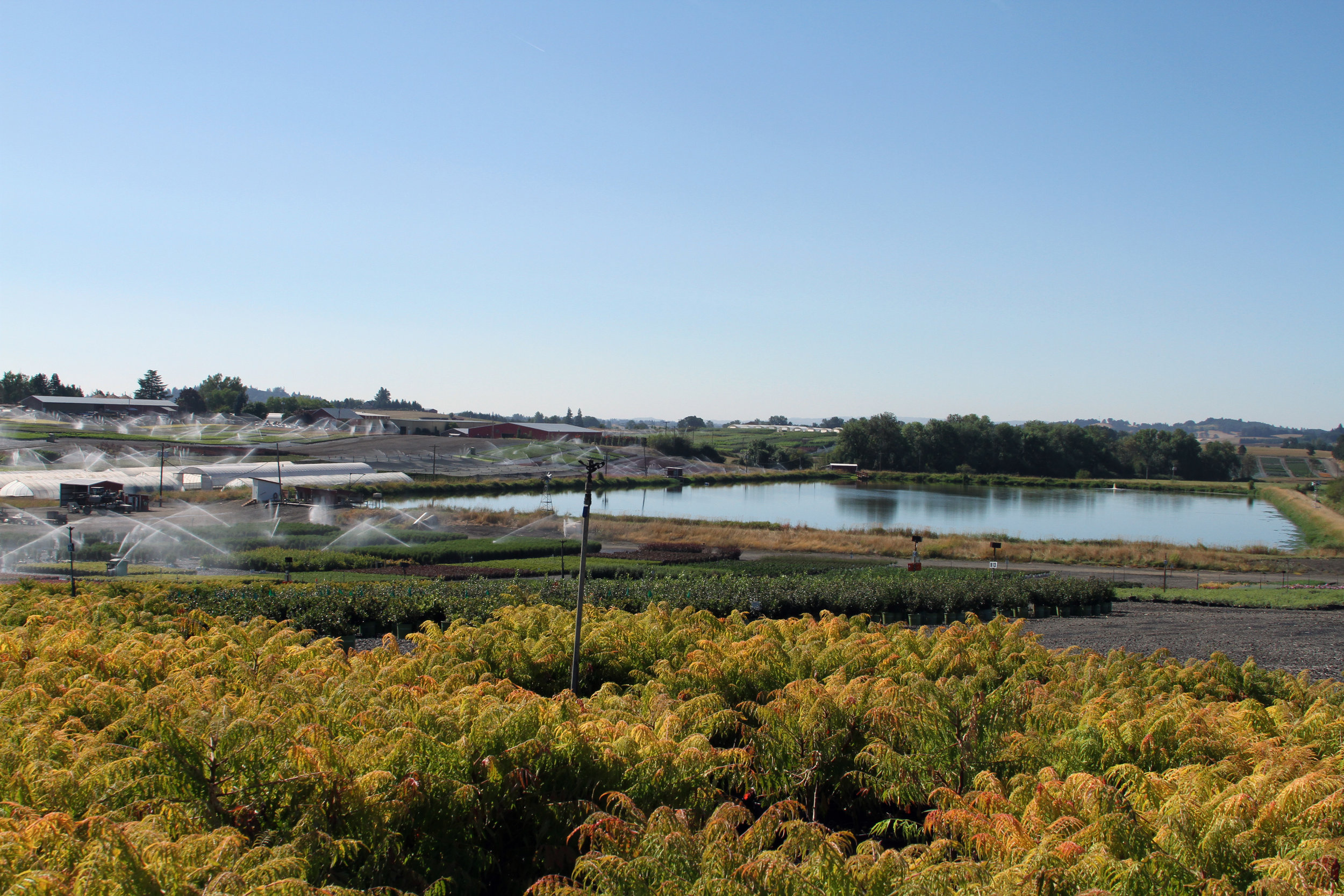
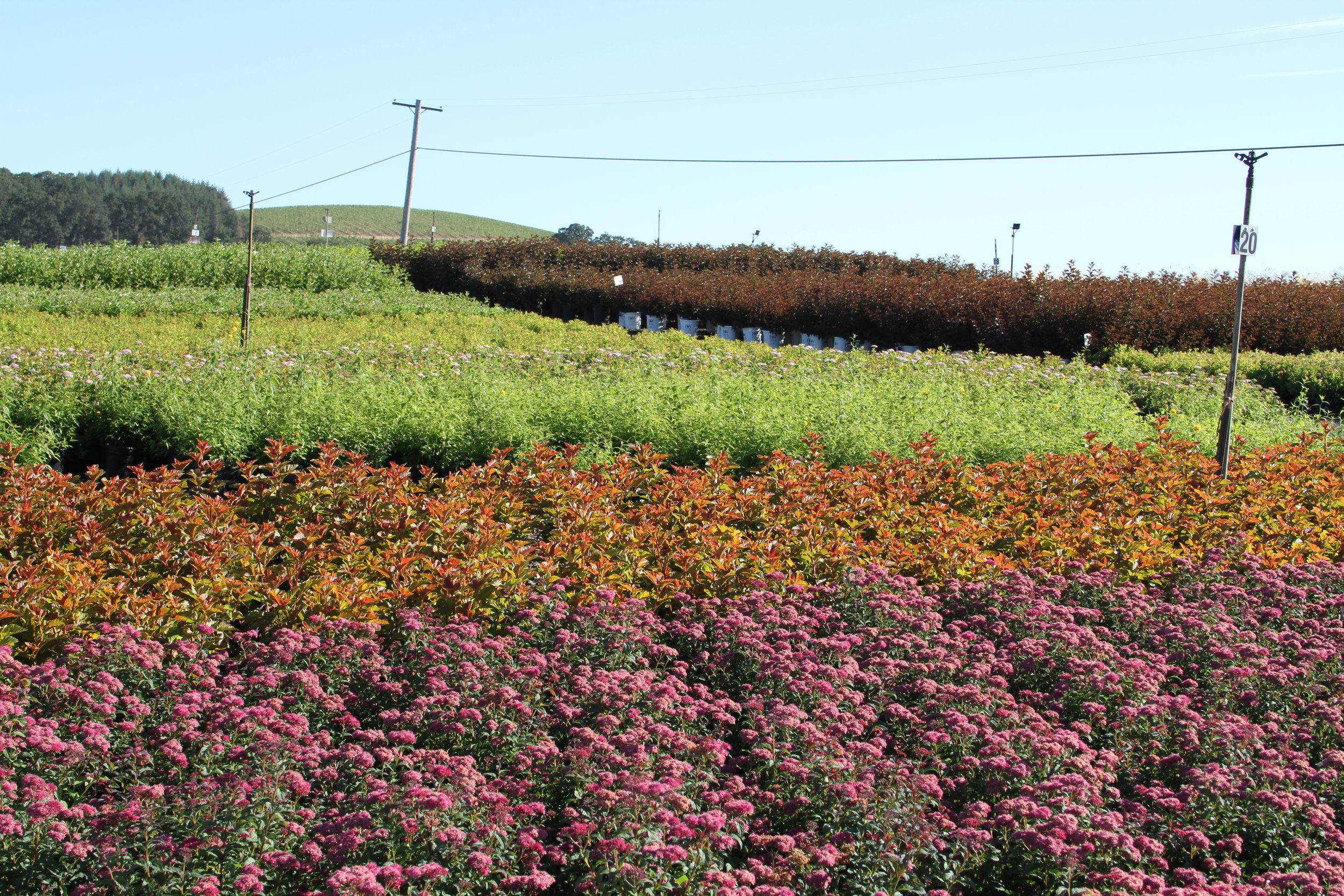
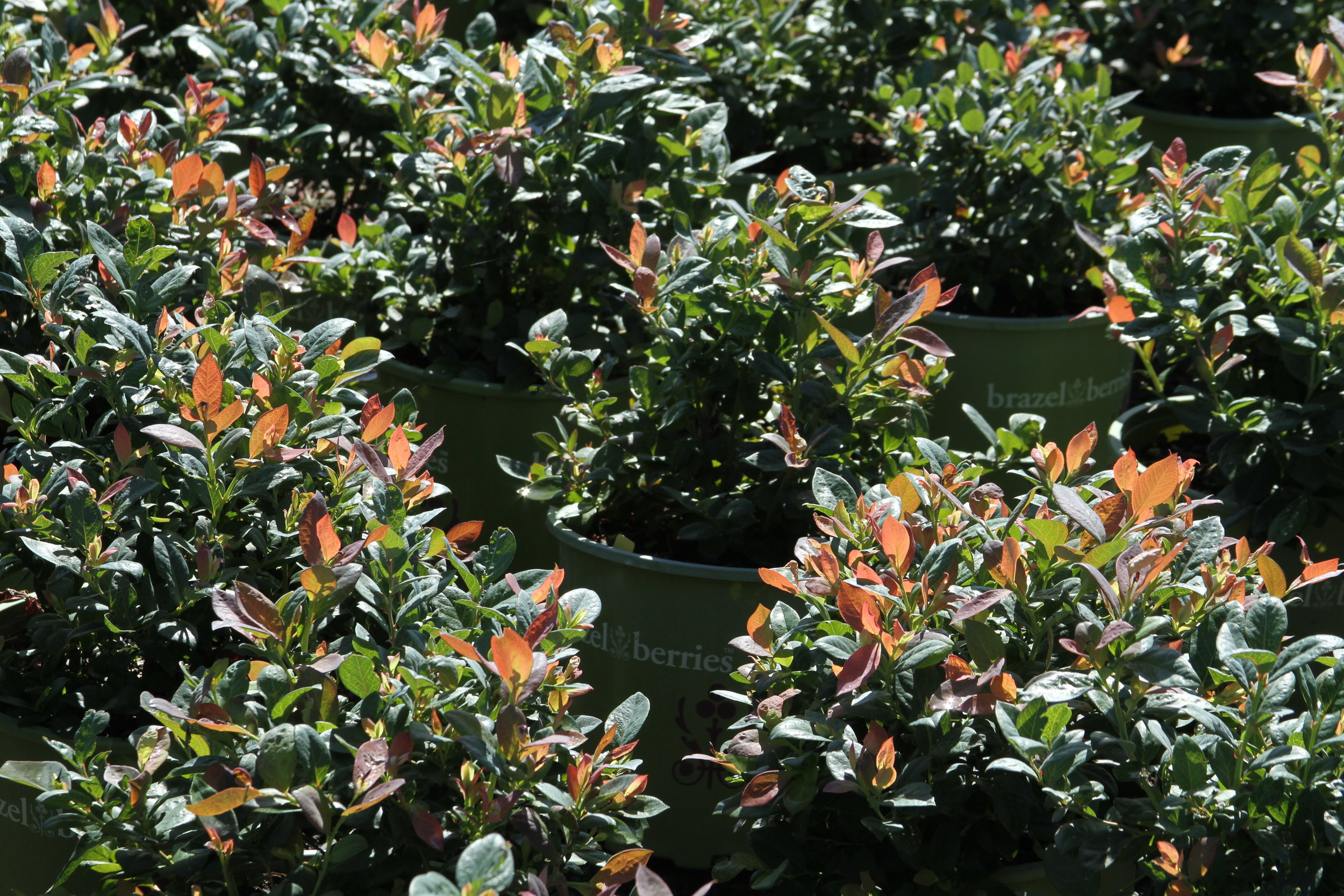
Bailey is always innovating, which makes it one of our favorite nurseries to visit. On this trip, we were introduced to several new cultivars as well as some of our well-known favorites. One new plant that caught our eye is the Limoncello barberry, with sunny yellow foliage that turns bright orange in the fall. New growth also emerges orange, as you can see in the photo below.
Assorted barberry, with Limoncello in the foreground.
Bailey grows many of the container-friendly berries that our customers love, including the Bushel & Berry® series of blueberries and thornless raspberries. With space at a premium in Seattle these days, being able to grow your own food on a deck or balcony in a container is pretty exciting. Not to mention that many blueberries offer a show of fall color.
When we stop at a field of Hydrangeas I ask about the different brands that are available. Sergio says that Bailey launched the Endless Summer® series in 2004 to showcase cultivars that rebloom very well. First Editions® is another Bailey brand that offers unique new colors, like the Diamond Rouge® Hydrangea, which blooms white, turns to pink, and finally fading to red. Bailey takes extra time growing their Hydrangeas, pruning them more often so they are extra full and bushy, blooming at just the right time.
Diamond Rouge® Hydrangea.
Hydrangeas protected from extreme heat under light shade cloth.
All of this takes an impressive amount of coordination, knowledge, and skill. Bailey employs an average of 325 employees at their three Pacific Northwest locations (they also have farms at Sauvie Island, Oregon and Sunnyside, Washington), with about 400 employees during peak seasons. Sergio estimates around 100 employees work at the Yamhill location each spring.
It also takes a lot of water. When I asked about the ways Bailey is working to conserve water, Sergio explained that they have several different ways of managing water use. They recycle close to 65% of their water using two on-site water reservoirs. They have also invested in drip irrigation, which currently makes up approximately 70% of their irrigation system. In their propagation department - a complex of 93 greenhouses that cover 9.5 acres and produce 4.6 million cuttings each year, Bailey uses water from the reservoirs that originates in the Yamhill River and is then filtered and chlorinated before being pumped into propagation.
To get an idea of the care involved in propagating and raising plants, Sergio took us to visit some of the propagation areas. First was roses, which Bailey propagates - by hand. Tens of thousands of rose cuttings are made by hand and then planted individually into trays to grow into the rose bushes that you and I will eventually find a special place for in our gardens.
Sergio shows us the rose propagation area. All these cuttings are put into trays by hand!
Next was the boxwood greenhouse. Did you know that a boxwood plant takes 2 years just to root! After the second year, the "plug" (a small plant) is pruned before it is planted in the ground and grown for another 3-4 years. Finally it is transferred to a pot and grown for another year before it is pruned again. Only then is it ready to be shipped to Swansons for sale.
Boxwood as far as the eye can see. Boxwood cuttings (lower left) and young plants (lower right) being cared for in the Bailey greenhouses.
As we prepare to leave, I ask Sergio what keeps him interested in growing after all these years. For him, he says, the excitement of growing is the challenge; the enjoyment of learning the intricacies of each new plant as it changes and grows.
No matter what the reasons behind your passion for plants, we hope this post provided a little knowledge and inspiration for you.
Happy Planting!
Text and photos by Aimée Damman




